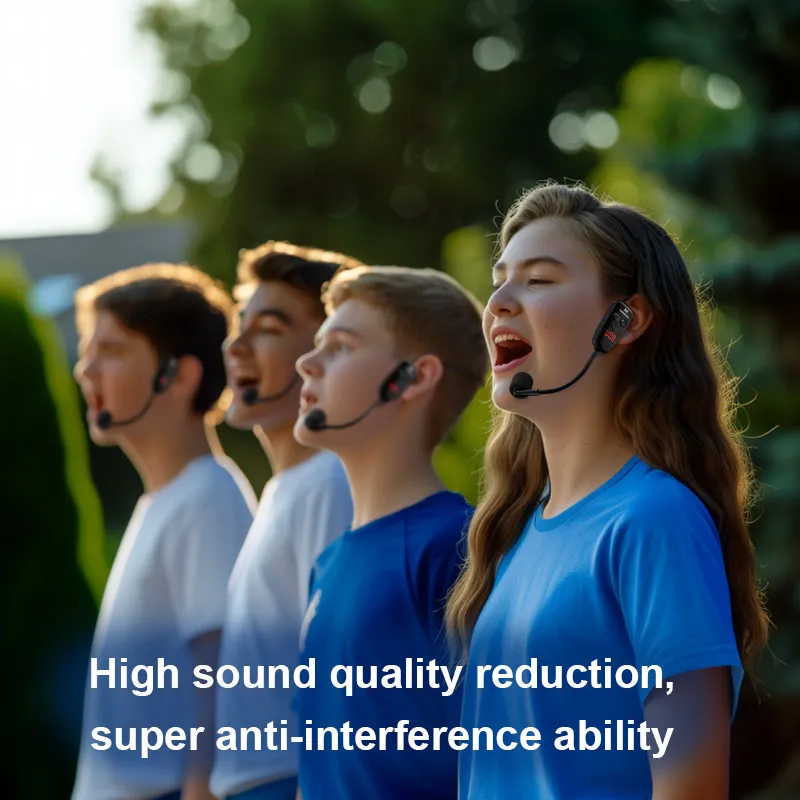How Teachers Should Select a Microphone
How to Choose a Microphone for Teachers
As a teacher, having a reliable microphone is essential for ensuring clear communication, reducing vocal strain, and engaging students effectively. Whether you’re teaching in a classroom, conducting online lessons, or leading a workshop, choosing the right microphone can make a significant difference. Here’s a guide to help you select the best microphone for your teaching needs.

1. Determine Your Teaching Environment
The first step in choosing a microphone is to consider your teaching environment:
- Classroom Setting: If you teach in a large classroom, a wireless microphone with a UHF system is ideal for mobility and clear sound projection.
- Online Teaching: For virtual lessons, a USB condenser microphone or a lapel microphone can provide high-quality audio for video conferencing platforms.
- Outdoor Activities: If you lead outdoor tours or field trips, a portable handheld microphone or headset microphone is durable and easy to use.
2. Choose the Right Microphone Type
There are several types of microphones suitable for teachers:
- Lavalier Microphones (Clip-On): These are small, lightweight, and clip onto your clothing, leaving your hands free. Perfect for teachers who move around frequently.
- Headset Microphones: These provide consistent sound quality and are ideal for active teachers who need both hands free.
- Handheld Microphones: Great for interactive sessions or when passing the mic between students.
- Desktop Microphones: Suitable for stationary setups, such as online teaching or recording lectures.
3. Prioritize Sound Quality and Features
Look for microphones with the following features:
- Low Noise: Ensures clear audio without background interference.
- Amplification: Helps project your voice clearly, especially in large spaces.
- Wireless Connectivity: Offers flexibility and freedom of movement.
- Battery Life: For wireless microphones, long battery life is crucial for uninterrupted teaching.
4. Consider Comfort and Ease of Use
Teaching often involves long hours, so comfort is key:
- Choose lightweight and ergonomic designs.
- Ensure the microphone is easy to set up and use, especially if you’re not tech-savvy.
- For wireless options, check the range and stability of the connection.
5. Budget and Durability
While it’s important to stay within your budget, investing in a durable, high-quality microphone can save you money in the long run. Look for reputable brands and read reviews to ensure reliability.
6. Recommended Microphones for Teachers
Here are some popular options:
- Wireless Lavalier Microphones: Ideal for hands-free teaching and mobility.
- USB Condenser Microphones: Perfect for online teaching with plug-and-play simplicity.
- UHF Wireless Microphones: Great for large classrooms or outdoor activities with long-range connectivity.

Conclusion
Choosing the right microphone for teaching depends on your specific needs, environment, and budget. By considering factors like sound quality, comfort, and ease of use, you can find a microphone that enhances your teaching experience and ensures your voice is heard clearly. Whether you’re in a classroom, online, or on the go, the right microphone can make all the difference!
For classroom settings, a lapel microphone or headset microphone is often ideal, as it allows you to move freely while maintaining consistent audio quality. If you’re teaching online, a USB condenser microphone can provide professional-grade sound for virtual lessons. For those who frequently switch between environments, a versatile wireless microphone might be the best choice, offering flexibility and convenience. Additionally, consider the durability and battery life of the microphone, especially if you teach for long hours or in different locations. Noise-canceling features can also be crucial in noisy environments, ensuring your voice remains clear and uninterrupted. Finally, don’t overlook the importance of compatibility with your existing devices, such as laptops, tablets, or projectors. By carefully evaluating these factors, you can select a microphone that not only meets your teaching demands but also enhances student engagement and learning outcomes.

